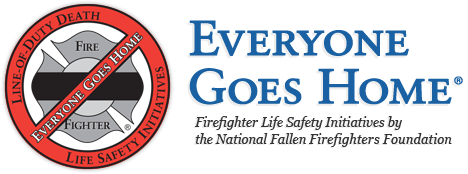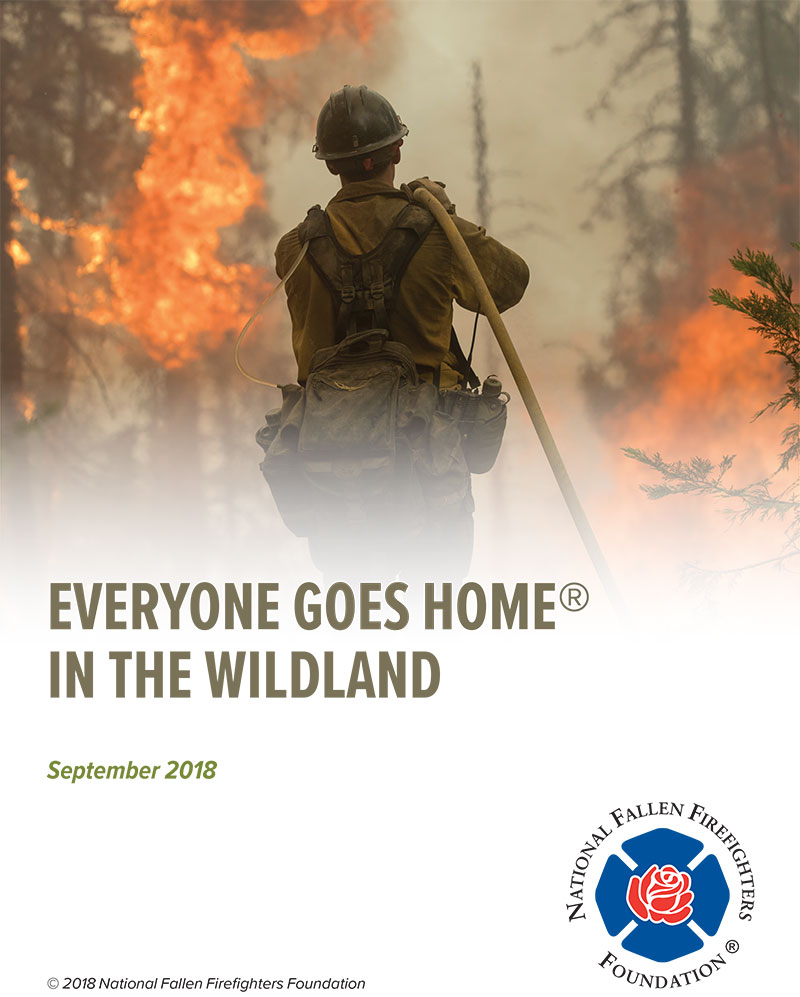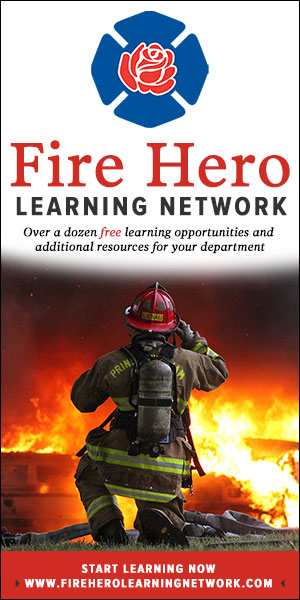Everyone Goes Home® in the Wildland
Related News
Family Resources
Wildland Firefighter Foundation
The Wildland Firefighter Foundation provides help to the families of wildland firefighters who have lost their lives or are injured in the line of duty.
Behavioral Health
Wildland Firefighter Foundation’s One Foot in the Black
This suicide prevention and resilience program speaks honestly and directly to wildland firefighters and their families about the importance of recognizing the warning signs of suicide, the risk and protective factors, how to talk with someone who is feeling suicidal, and how to build and sustain a life worth living.
Physical and Emotional Health Resources for Wildland Firefighters and their Families
Federal Agencies/National Organizations
- Bureau of Indian Affairs – Branch of Wildland Fire Management
- Bureau of Land Management – Fire & Aviation
- Fish and Wildlife Services – Wildland Fire
- National Association of State Foresters
- National Park Service
- U.S. Department of the Interior – Office of Wildland Fire
- U.S. Forest Service – Fire & Aviation
- Wildland Fire Leadership Council
Training Resources
Interagency Aviation Training
The Interagency Aviation Training (IAT) Education, Qualification, and Currency System contains established aviation training standards and records for natural resource and firefighting employees within the Department of the Interior (DOI), U.S. Forest Service and recognized partners. The Executive Aviation Committee (EAC) and the Executive Aviation Subcommittee (EAS) in conjunction with its partners, provides national leadership in managing aviation standards, procedures, and programs that enable our partners to effectively utilize aviation resources in a safe and efficient manner. Aviation training is the primary proactive method of improving efficiency and safety through increased employee awareness of agency policy, procedures, and safe practices.
National Interagency Wildfire Coordinating Group (NIFC)
National Wildfire Coordinating Group (NWCG)
The NWCG provides national leadership that enable interoperable wildland fire operations among federal, state, local, tribal, and territorial partners. Their primary objectives are to:
- Establish national interagency wildland fire operations standards.
- Establish wildland fire position standards, qualifications requirements, and performance support capabilities (e.g. training courses, job aids) that enable implementation of NWCG standards.
- Support the National Cohesive Wildland Fire Management Strategy goals: to restore and maintain resilient landscapes; create fire adapted communities; and respond to wildfires safely and effectively.
- Establish information technology capability requirements for wildland fire.
- Ensure that all NWCG activities contribute to safe, effective, and coordinated national interagency wildland fire operations.
Wildland Fire Lessons Learned Center
Information is provided with the intent to share knowledge to improve safety, performance, efficiency and organizational learning throughout the entire wildland fire community.
Research
Fire Research and Management Exchange System
FRAMES is an online network that provides a convenient, systematic exchange of information and technology within the wildland fire research and management community. FRAMES is located in the Department of Forest Rangeland, and Fire Sciences in the University of Idaho College of Natural Resources in Moscow, Idaho, and funded by the Fire, Fuel, and Smoke Science Program at the USFS Rocky Mountain Research Station.
National Institute for Occupational Safety and Health (NIOSH)
NIOSH Wildland Fire Health Hazard Evaluations
NIOSH conducts Health Hazard Evaluations (HHEs) to determine whether there are health hazards to employees caused by exposures or conditions in the workplace.
NIOSH Fighting Wildfire Publications and Resources
NIOSH Fire Fighter Fatality Investigation and Prevention Program
The NIOSH Fire Fighter Fatality Investigation and Prevention Program conducts investigations of fire fighter line-of-duty deaths to formulate recommendations for preventing future deaths and injuries.
Community Risk Reduction
Firewise USA®
NFPA’s Firewise USA® program teaches people how to adapt to living with wildfire and encourages neighbors to work together and take action now to prevent losses.
National Cohesive Wildland Fire Management Strategy
The National Cohesive Wildland Fire Management Strategy is a strategic push to work collaboratively among all stakeholders and across all landscapes, using best science, to make meaningful progress towards the three goals:
- Resilient Landscapes
- Fire Adapted Communities
- Safe and Effective Wildfire Response
The National Strategy establishes a national vision for wildland fire management, to safely and effectively extinguish fire when needed; use fire where allowable; manage our natural resources; and as a nation, to live with wildland fire. It also explores four broad challenges:
- Managing vegetation and fuels;
- Protecting homes, communities, and other values at risk;
- Managing human-caused ignitions; and
- Effectively and efficiently responding to wildfire.
NFPA Wildland Fire Resources
NFPA’s Wildfire Division provides resources to residents and stakeholders to help ensure that everyone living at risk from wildfire has the information, knowledge, and tools to reduce their risk.



